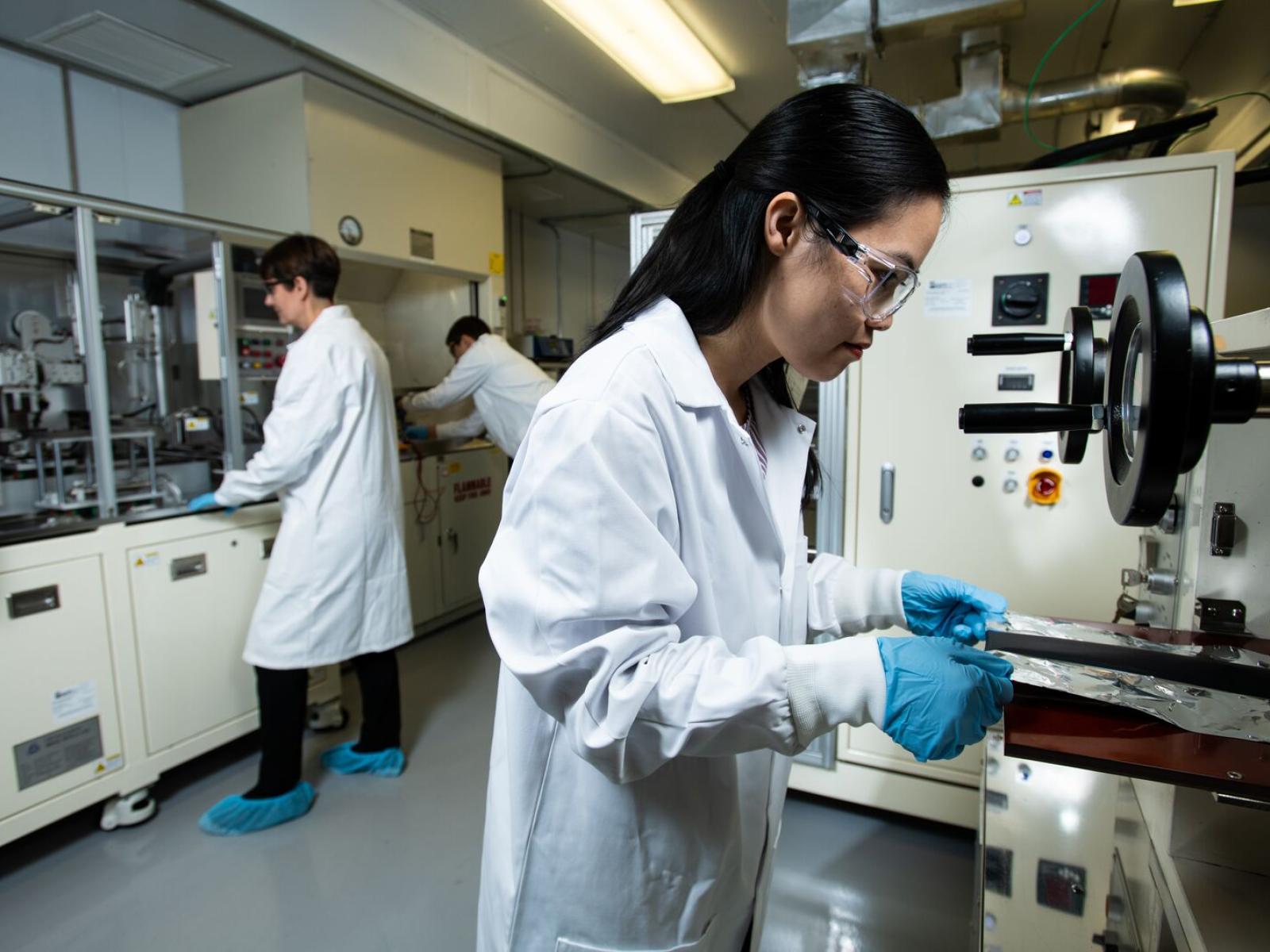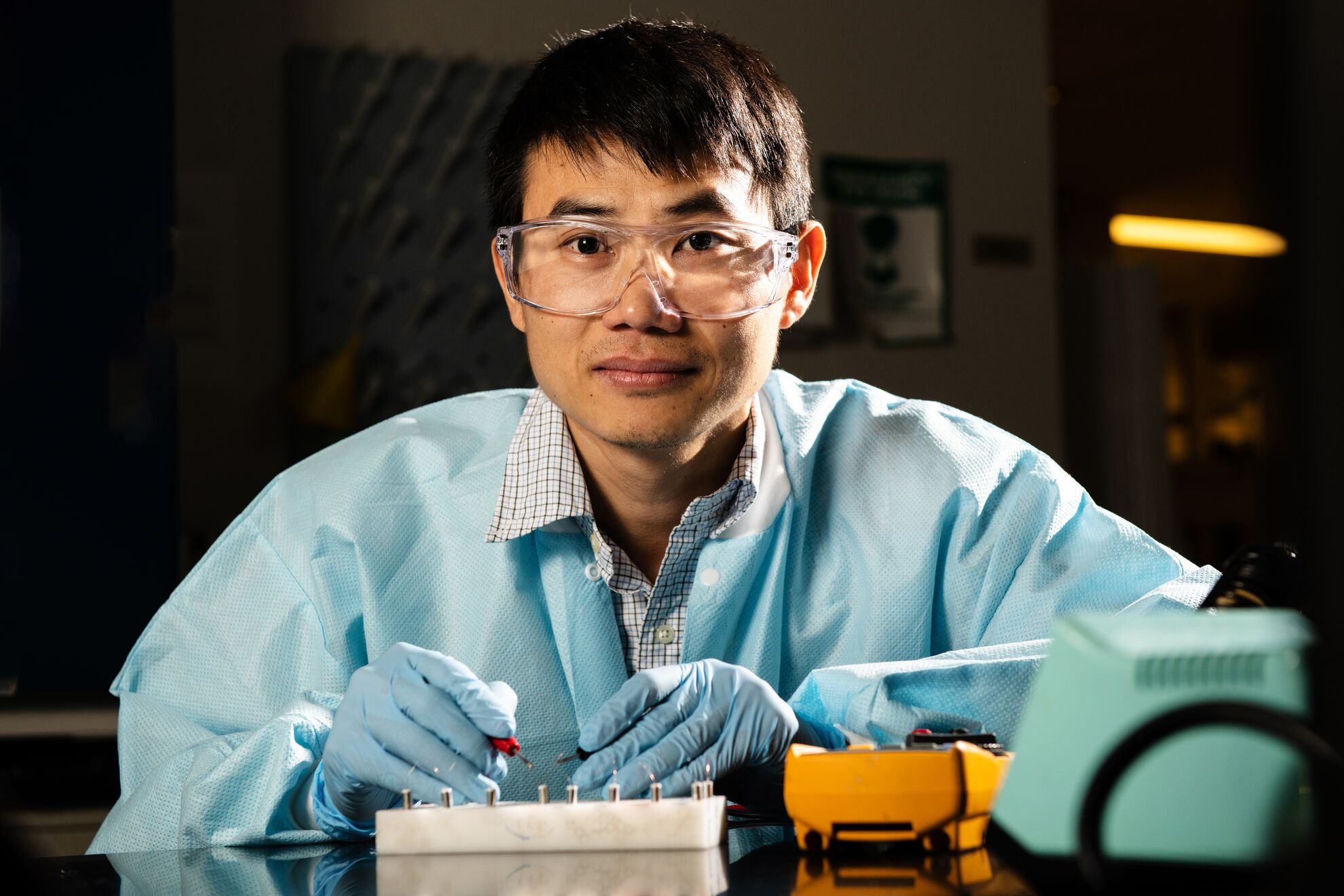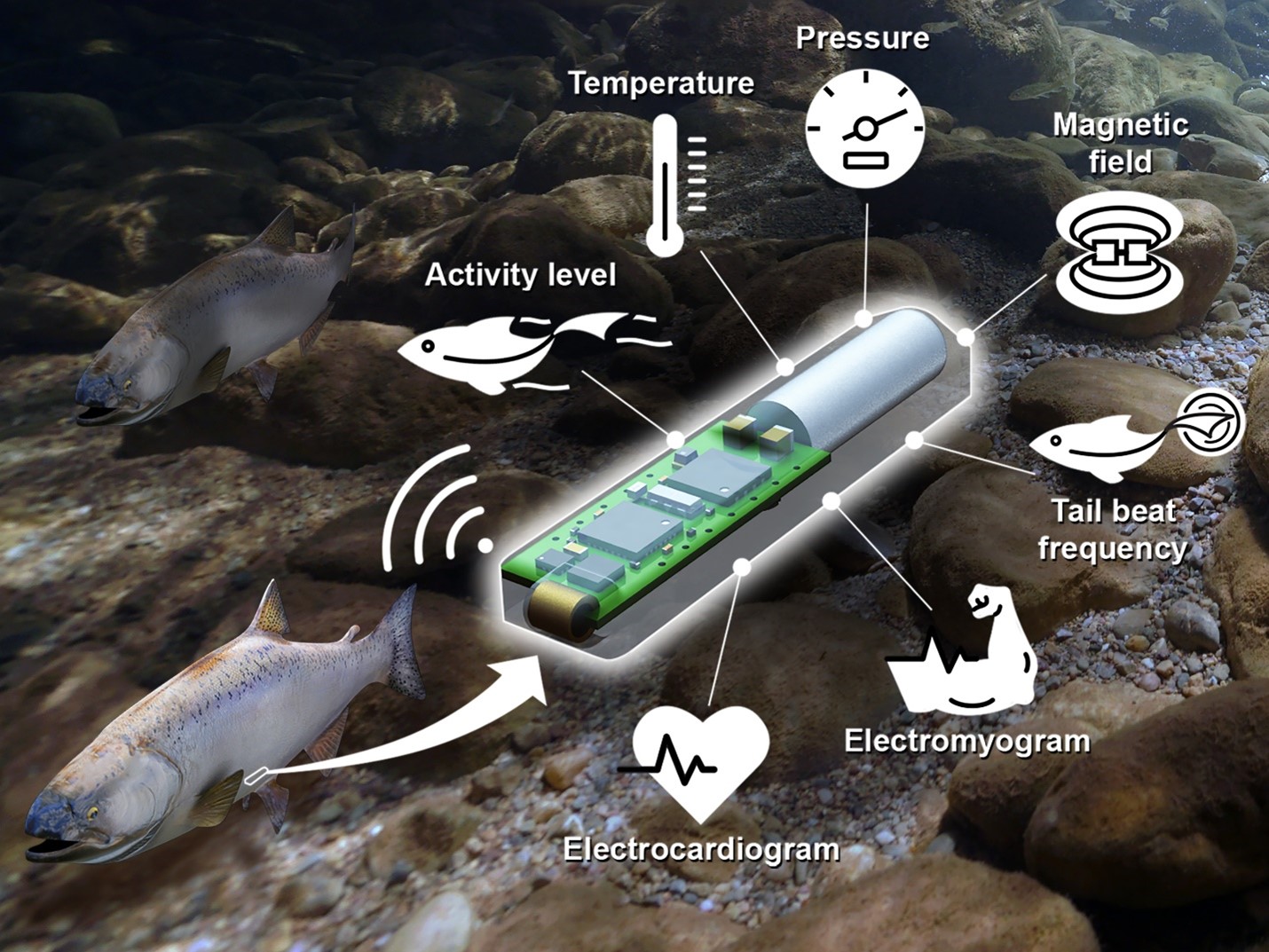Sensors and Batteries: Never Small Enough?
A PNNL-led paper examines the need for the next generation of microsensors, power sources, and materials for environmental and sensitive species monitoring

PNNL’s Advanced Battery Facility is one of the resources that is contributing to advances in tiny power sources for sensor applications.
(Photo by Andrea Starr | Pacific Northwest National Laboratory)
Tiny sensors perform big jobs in a growing number of fields, from health care and the environment to industrial processes and personal electronic devices. And behind every effective miniature sensor is a reliable—and tiny—battery.

“Our society has become more technology-savvy and more reliant on small electronics and sensors than ever before, and the demand for ever smaller sensors continues to grow,” said Zhiqun Daniel Deng, a Laboratory Fellow at Pacific Northwest National Laboratory (PNNL). “We have been working on miniaturized sensors and microbatteries for the past decade at PNNL. Our efforts have ranged from materials to components integration and field demonstration. The knowledge gathered and lessons learned led us to develop an overview of the progress in this field and share our insights for its future direction.”
Toward that purpose, a journal paper, “Functional Materials for Powering and Implementing Next-Generation Miniature Sensors,” was published last fall in Materials Today. The paper was authored by PNNL’s Bingbin Wu, Habilou Ouro-Koura, Huidong Li, Jie Xiao, and Deng. Additional authors were the University of Connecticut’s Shao-Hao Lu and Xueju Wang.
The nuts and bolts of sensors and microbatteries
Small sensors usually comprise electronics and other components, as well as a microbattery to power the sensor. Developers need a clear understanding of multiple factors to effectively integrate all sensor components and make them seamlessly work for various applications. These factors range from the materials used to create the components, to the interactions between different components.
Definitions of microbatteries vary, but generally they range in size from extra small—less than one cubic millimeter—to much larger, along the lines of batteries used in power tools. When users design or select microbatteries for a specific application, the considerations include volume, power, operating voltage, and flexibility of use. PNNL experts believe the need for increasingly smaller, higher-energy-density, and safe power sources will require a redoubling of the nation’s battery development efforts.
Examining progress and looking to the future
The journal paper reviews the important role of novel materials in miniaturizing sensors. It also reviews microbatteries, including materials, architecture, and fabrication technologies from the past 10 years. The paper further explores functional materials for creating next-generation miniature sensors and their electronics, along with materials for energy harvesting, which can capture energy from the natural movement of an animal, for example, and store it in a battery.
By documenting the current state of technology development and identifying new ways that materials and energy harvesting can revolutionize the next generation of sensing, the paper helps chart a course for future research.
PNNL harnesses capabilities and collaboration to deliver innovation
PNNL’s decades-long expertise and work in energy storage, materials, and energy harvesting, coupled with extensive collaborative research, drives advancements in sensing technologies for medical applications, electric vehicles, the power grid, and smart manufacturing.

From fundamental materials research to device integration and field deployment, PNNL’s scientists excel at identifying and addressing scientific real-world challenges. For example, PNNL has made significant, award-winning contributions to develop acoustic and radio-frequency sensors in wildlife tracking, informing natural resource management. PNNL also supports domestic manufacturing of microbattery technologies for broad applications.
Collaboration between energy storage and sensor teams at PNNL has been underway for more than a decade. “The two teams learn from each other and have built a very strong partnership in advancing sensor technologies by utilizing different expertise. I expect many more achievements to come in the future because of Daniel’s leadership in this area,” said Jie Xiao, a paper co-author and Battelle Fellow at PNNL who leads the Battery & Materials System group.
The successful collaborations, built in part around tracking technologies for fish and other animals, have resulted in multiple technology achievements that benefit national and international sensor and battery development. Examples include:
- Lab-on-a-Fish – This miniaturized and implantable fish tracking tag incorporates advances in computing and wireless sensing to provide real-time monitoring of aquatic animals, their health, and environmental conditions. Lab-on-a-Fish is available for licensing in all fields.
- Biomechanical energy harvester – This technology leverages a piezoelectric beam (which creates energy from pressure and heat) to capture the energy-generating natural movements of an animal fitted with a wearable or implantable tracking device. Harvested energy both helps transmit signals and provides a longer-term power source for the device. The technology has been demonstrated in the lab and continues in development for field demonstration.
- Acoustic micro-transmitter (AMT) – The lightweight AMT is the smallest implantable transmitter for tracking fish in their habitats. Its size enhances data gathering from smaller species, providing critical information for recovering fish populations and developing fish-friendly hydroelectric systems. The device’s high-energy microbattery offers a longer service life than other technologies. AMT has been demonstrated in the field and is available for licensing.
- Tubular battery technology – This reduces some battery shape limitations for better integration with portable electronic devices such as cell phones and tablets. PNNL-developed fabrication techniques improve battery performance and offer new insights for battery design.
- Thin, vertical microbattery – The orientation and improved battery chemistry produce a fish tracking tag that can more readily be injected into the animal and provide desired data. The method also offers improved performance in situations where temperature variations may affect battery operation. The technology is available for licensing.
For the journal paper’s development, the Department of Energy’s Water Power Technologies Office funded the work of staff at PNNL, and the U.S. Office of Naval Research funded the work of the University of Connecticut staff.
Published: March 26, 2024